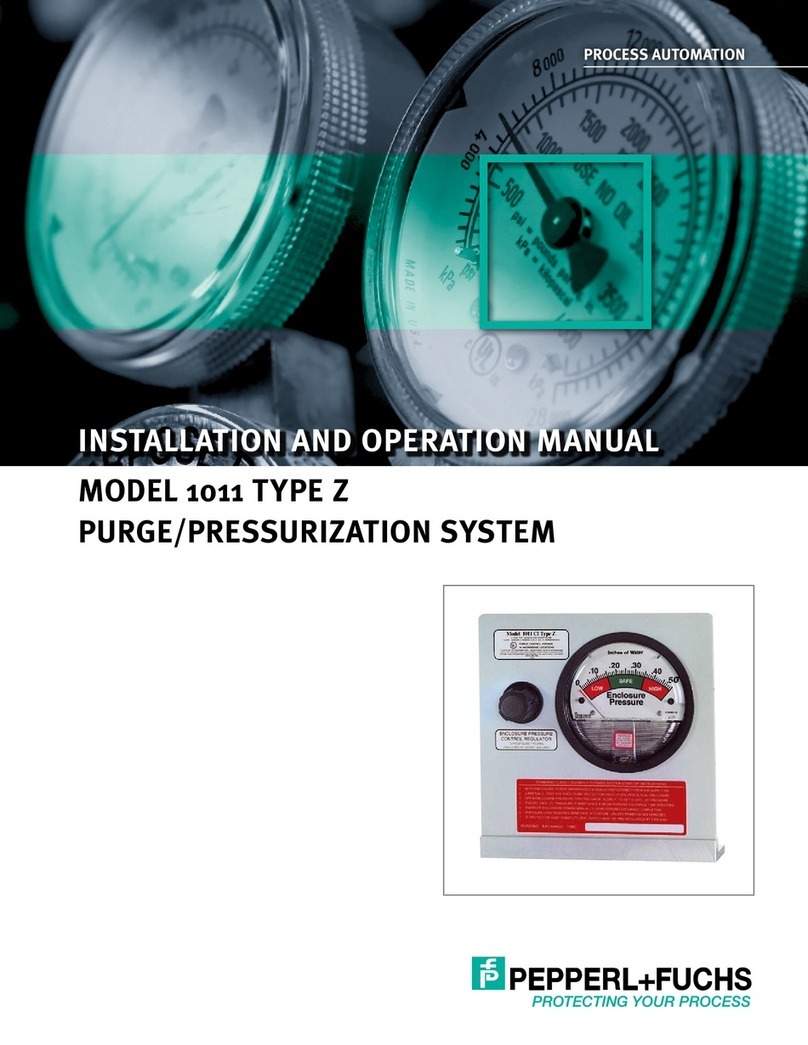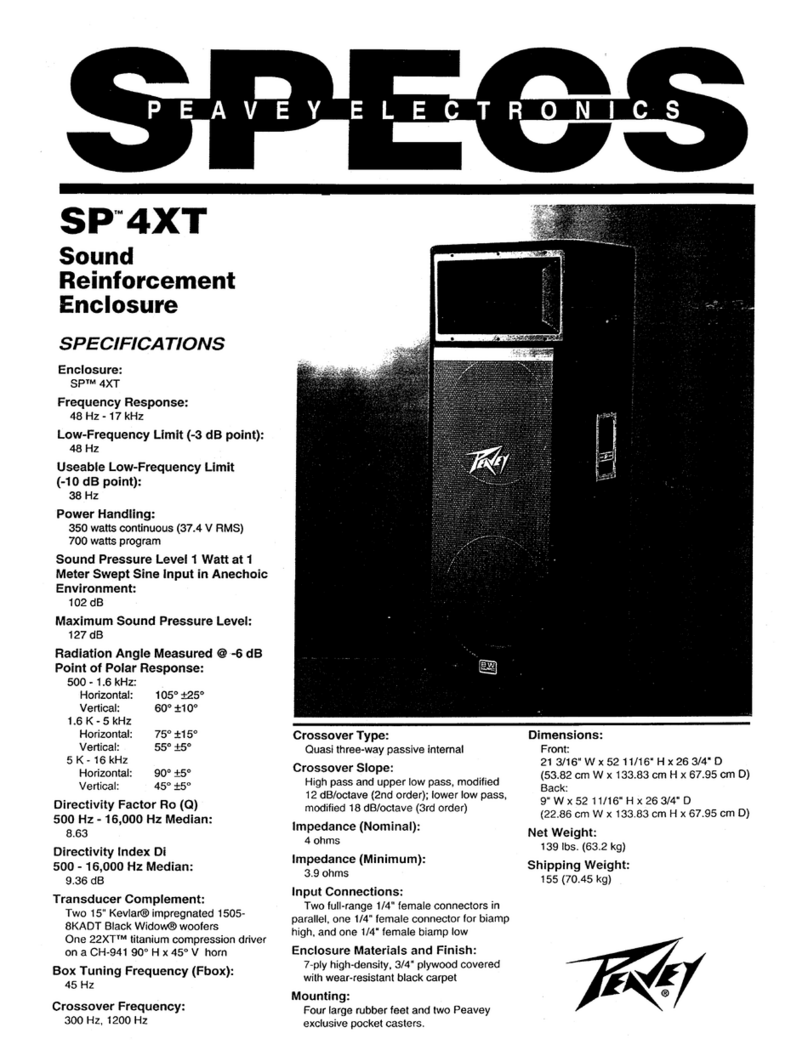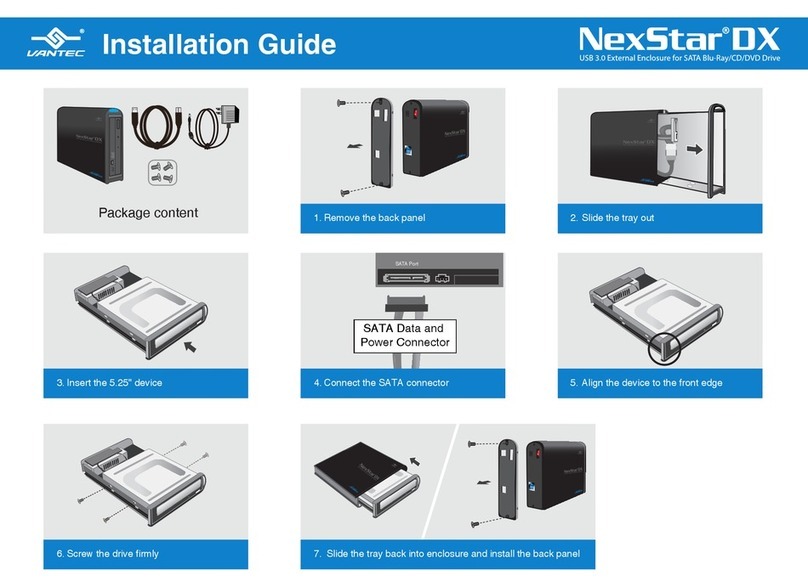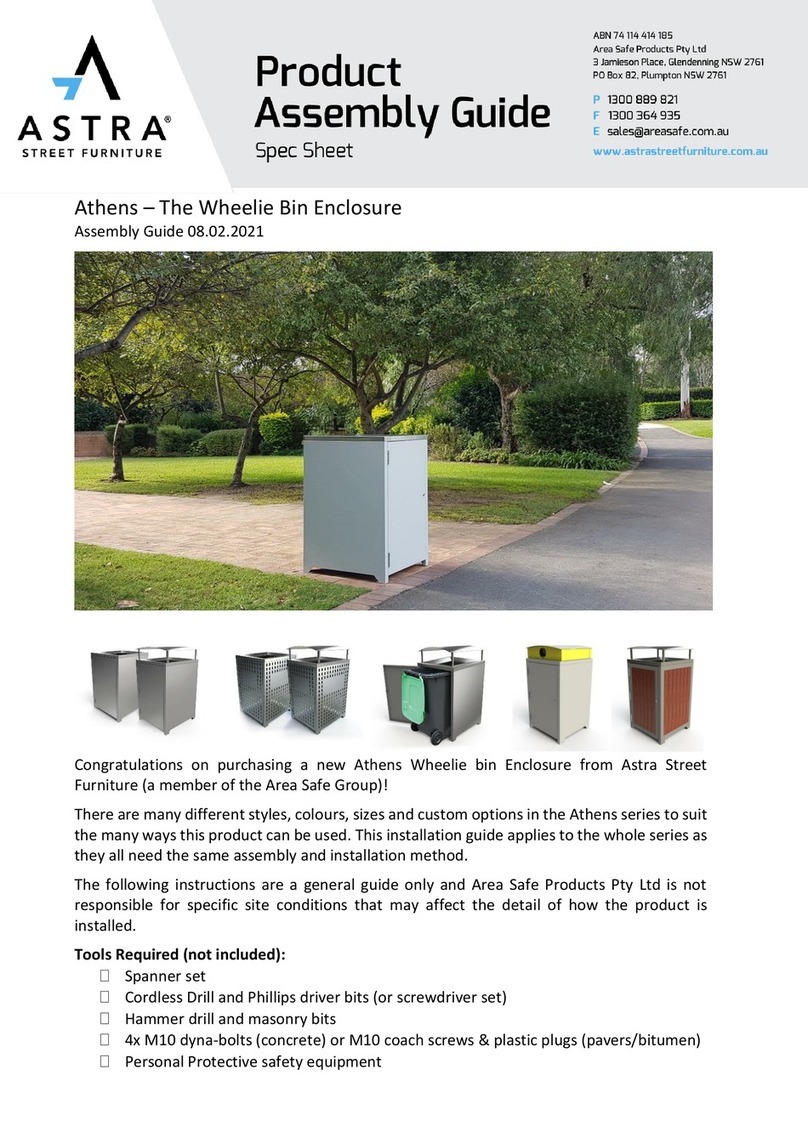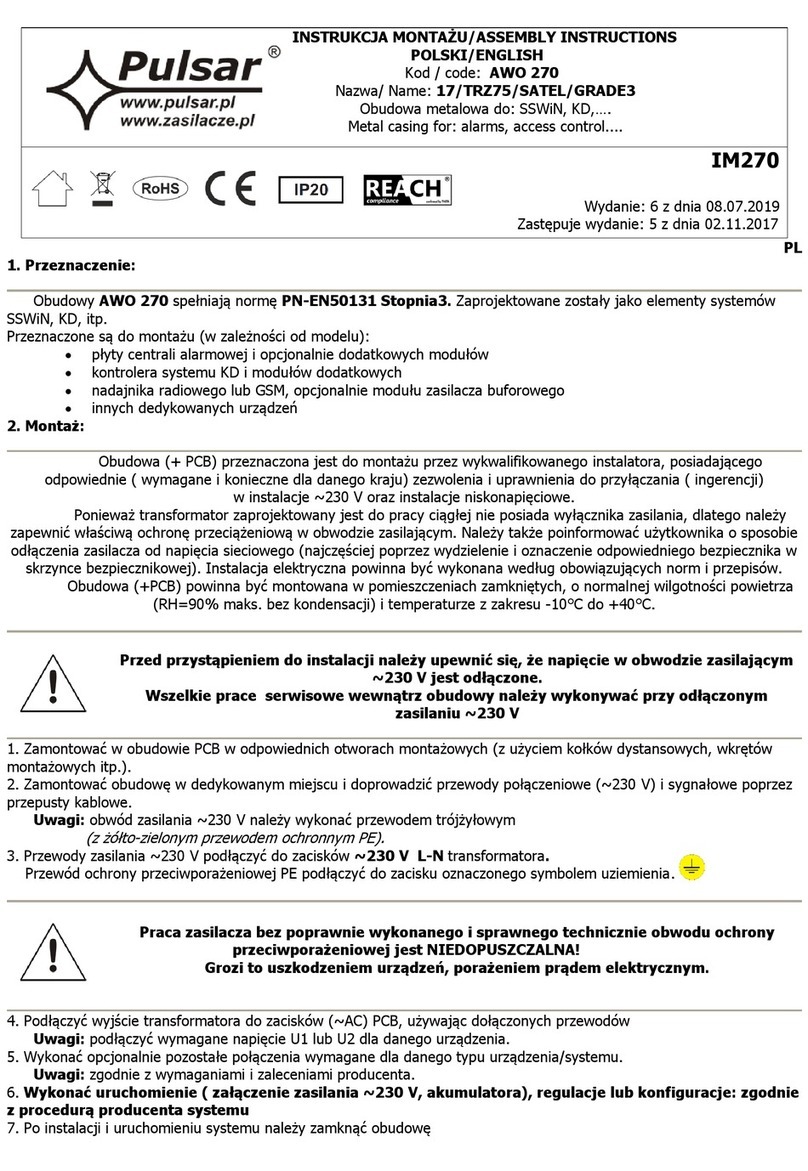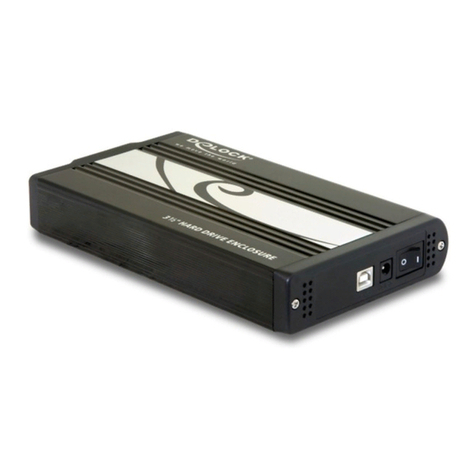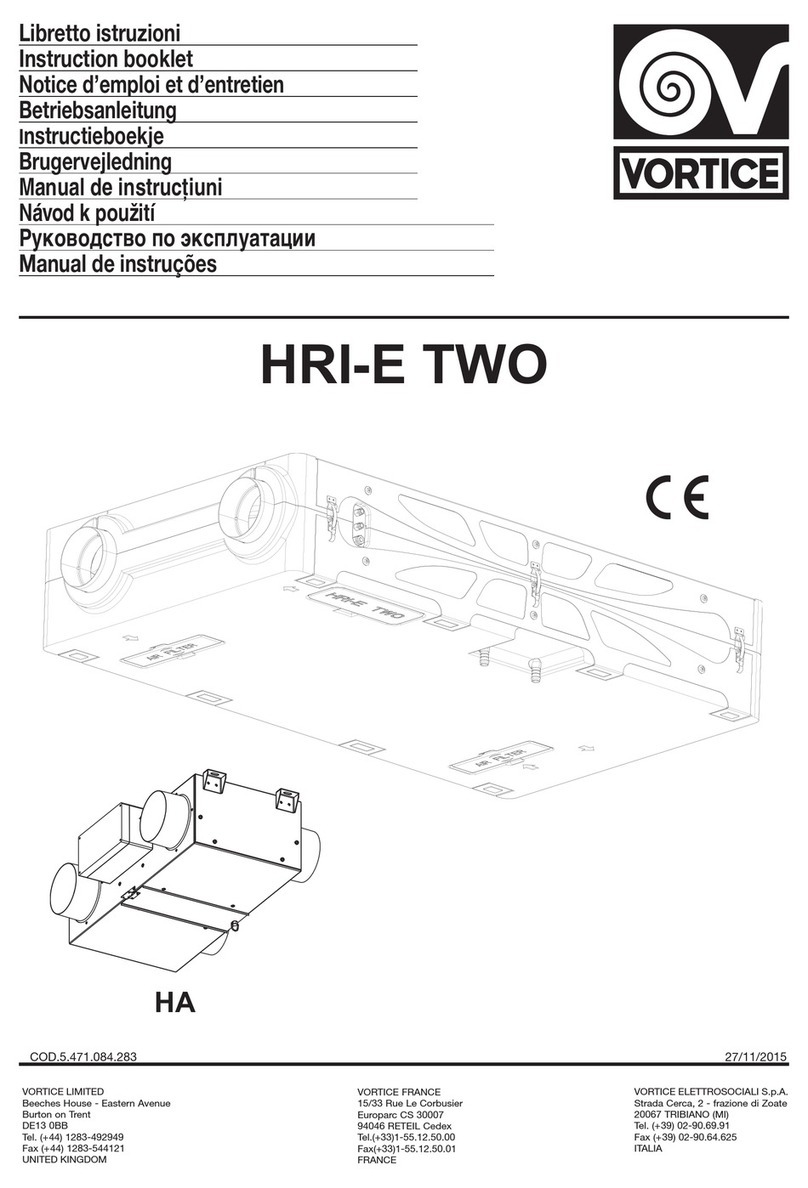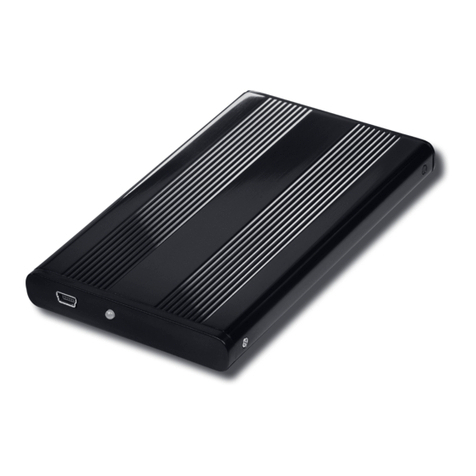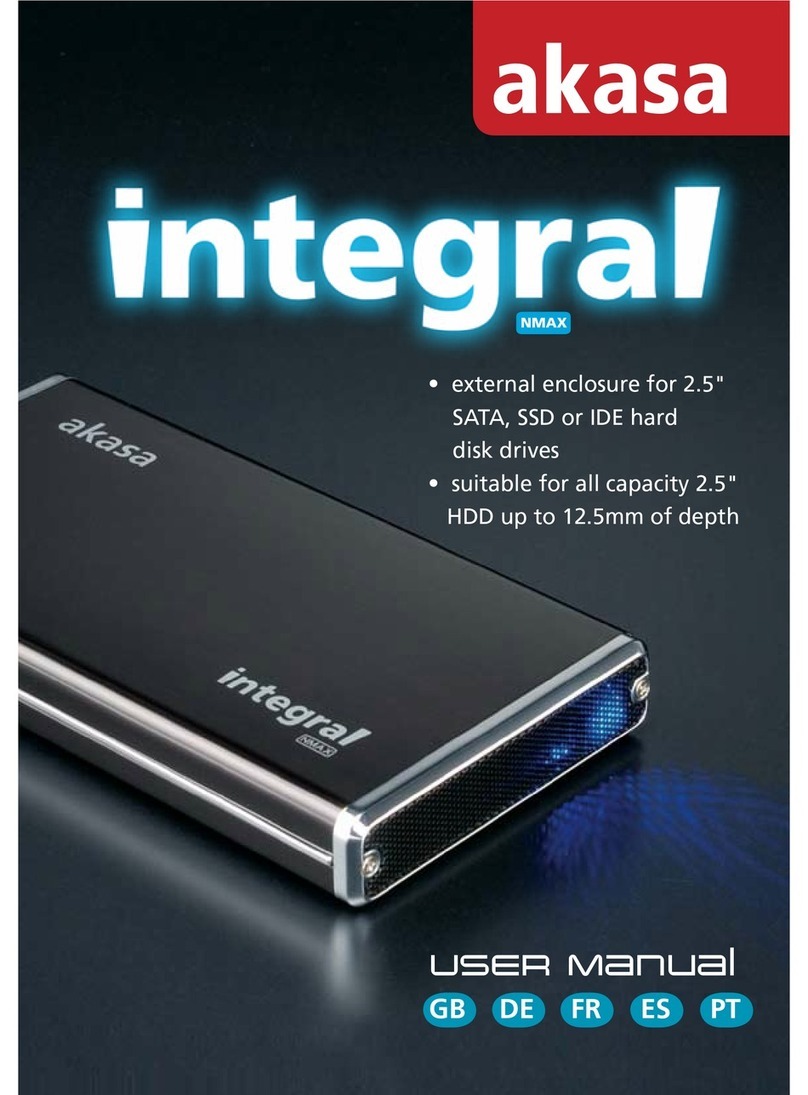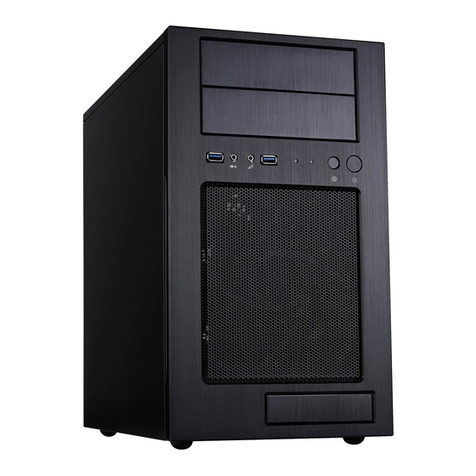DEC BA400 Series User manual

BA400-SeriesEnclosures
StorageDevices
InstallationProcedures
Order Number: EK–BA44A–IN. K01
Revision Information: This manual supersedes
EK–BA44A–IN. J01
Digital Equipment Corporation
Maynard, Massachusetts

First Printing, June 1990
Revised, September 1990,
July 1991,
January 1992,
October 1992,
June 1994
July 1994
March 1996
Digital Equipment Corporation makes no representations that the use of its products in the
manner described in this publication will not infringe on existing or future patent rights, nor do
the descriptions contained in this publication imply the granting of licenses to make, use, or sell
equipment or software in accordance with the description.
Possession, use, or copying of the software described in this publication is authorized only
pursuant to a valid written license from Digital or an authorized sublicensor.
© Digital Equipment Corporation 1996.
Printed in U.S.A.
The postpaid Reader’s Comments form at the end of this document requests your critical
evaluation to assist in preparing future documentation.
The following are trademarks of Digital Equipment Corporation: CompacTape, CX, DDCMP,
DEC, DECconnect, DECdirect, DECnet, DECscan, DECserver, DECUS, DECwindows, DELNI,
DEMPR, DESQA, DESTA, DSRVB, DSSI, IVAX, KDA, KLESI, KRQ50, MicroVAX, MSCP, Q–bus,
Q22–bus, RA, RQDX, RV20, SA, SDI, ThinWire, TMSCP, TQK, TS05, TU, VAX, VAX 4000,
VAXcluster, VAX DOCUMENT, VAXELN, VAXlab, VAXserver, VMS, VT, and the DIGITAL logo.
Velcro is a registered trademark of Velcro USA, Inc.
All other trademarks and restricted trademarks are the property of their respective holders.
FCC NOTICE The equipment described in this manual generates, uses, and may emit radio
frequency energy. The equipment has been type tested and found to comply with the limits for
a Class A computing device pursuant to Subpart J of Part 15 of FCC Rules, which are designed
to provide reasonable protection against such radio frequency interference when operated
in a commercial environment. Operation of this equipment in a residential area may cause
interference, in which case the user at his own expense may be required to take measures to
correct the interference.
S3085
This document was prepared using VAX DOCUMENT Version 2.1.

Contents
Preface ..................................................... vii
1 EF- and RZ-Series Integrated Storage Elements
1.1 General . ........................................... 1–1
1.2 EF- and RZ-Series ISE Installation Preparation . . . .......... 1–6
1.3 Installation Procedure ................................. 1–7
1.3.1 ISE Installation in an Empty Slot . . ................... 1–7
1.4 Upgrading the ISE Storage Devices ....................... 1–14
1.4.1 Removing ISEs. ................................... 1–14
1.4.2 Installing a Second Storage Device in a 3.5-inch ISE....... 1–18
1.4.2.1 Remove the Top Outside Bracket ................... 1–18
1.4.2.2 Installing the New Storage Device .................. 1–20
1.4.3 Installing Upgraded ISEs in the Mass Storage Cavity ...... 1–22
1.4.4 Bus Node ID Configuration Guidelines ................. 1–23
1.5 Power-On Self-Test (POST) . . ........................... 1–24
1.5.1 EF-Series POST ................................... 1–24
1.5.2 RZ-Series POST ................................... 1–24
1.6 Setting the DSSI ISE Parameters ........................ 1–25
1.6.1 Accessing PARAMS ................................ 1–25
1.6.1.1 Using OpenVMS ............................... 1–25
1.6.1.2 Using Console Commands ........................ 1–26
1.6.1.3 Using MDM ................................... 1–27
1.6.2 Setting the ISE Allocation Class . . . ................... 1–28
1.6.3 Setting the MSCP Unit Number . . . ................... 1–30
1.6.4 Setting the ISE Node Name .......................... 1–31
1.7 Testing the ISE . . . ................................... 1–31
1.7.1 DRVTST Example ................................. 1–32
1.7.2 Error Messages ................................... 1–33
1.8 Setting the SCSI ISE Parameters ........................ 1–33
1.8.1 Problem Resolution ................................ 1–33
iii

2 TLZ-Series Tape Drives
2.1 General ............................................ 2–1
2.2 TLZ07 Tape Drive .................................... 2–1
2.3 TLZ07 Installation Preparation . . ........................ 2–2
2.4 TLZ07 Installation Procedure . . . ........................ 2–3
2.5 Completing the TLZ07 Installation ....................... 2–7
2.5.1 TLZ07 Power-On Self-Test . . . ........................ 2–7
2.6 Setting the ISE Parameters............................. 2–7
3 RRD-Series CD–ROM Drive
3.1 General ............................................ 3–1
3.2 RRD-Series CD–ROM Drive Installation Preparation . . ....... 3–1
3.3 Installation Procedure . ................................ 3–2
3.4 Completing the Installation ............................. 3–11
3.4.1 RRD CD–ROM Power-On Self-Test .................... 3–11
3.5 Setting the ISE Parameters............................. 3–11
4 RRD/TLZ07 Dual ISE Drives
4.1 General ............................................ 4–1
4.2 RRD/TLZ07 DUAL ISE Installation Preparation ............. 4–1
4.3 Installation Procedure . ................................ 4–2
4.4 Completing the Installation ............................. 4–6
4.4.1 RRD CD-ROM Power-On Self-Test ..................... 4–6
4.4.2 TLZ07 Power-On Self-Test . . . ........................ 4–7
4.5 Setting the ISE Parameters............................. 4–7
5 TZ-Series Tape Drive
5.1 General ............................................ 5–1
5.2 TZ-Series Tape Drive Installation Preparation............... 5–2
5.3 TZ-Series Tape Drive Installation ........................ 5–3
5.4 Completing the Installation ............................. 5–8
5.4.1 TZ-Series Power-On Self-Test ........................ 5–8
5.5 Setting the ISE Parameters............................. 5–9
iv

A Related Documentation
Index
Figures
1–1 EF-Series ISE (Front and Rear View) .................. 1–2
1–2 3.5-inch RZ-Series ISE (Rear View) . ................... 1–3
1–3 Front Panel Assembly . . . ........................... 1–4
1–4 Power Switch Location . . . ........................... 1–8
1–5 BA440 Enclosure .................................. 1–9
1–6 Blank Front Panel Assembly ......................... 1–10
1–7 Removing the Plastic Skid Plate from the EF-Series ISE . . . 1–11
1–8 Installing the ISE in the Storage Cavity ................ 1–12
1–9 Keylock Positions .................................. 1–15
1–10 Removing the ISE to Be Upgraded or Replaced . .......... 1–17
1–11 Removing the Top Outside Bracket from the ISE.......... 1–19
1–12 Installing the Phillips Screws That Secure the Storage
Device to the Inside Brackets......................... 1–21
1–13 Installing the ISE Upgrade in the Storage Cavity ......... 1–23
2–1 Opening the Enclosure Doors ......................... 2–4
2–2 Installing the TLZ07 Drive .......................... 2–6
3–1 Opening the Enclosure Doors ......................... 3–3
3–2 Inserting the RRD CD–ROM drive . ................... 3–5
3–3 KZQSA IN Connector ............................... 3–6
3–4 Removing the Connector Cover ....................... 3–7
3–5 KZQSA Cable . . ................................... 3–7
3–6 Connecting to KZQSA IN ........................... 3–8
3–7 KZQSA Label . . ................................... 3–9
3–8 KZQSA Module Connector ........................... 3–9
3–9 Connecting to KZQSA IN ........................... 3–10
4–1 Opening the Enclosure Doors ......................... 4–3
4–2 Installing the RRD/TLZ07 Dual ISE ................... 4–5
5–1 TZ86 Tape Drive Front Panel......................... 5–1
5–2 Power Switch Location . . . ........................... 5–4
5–3 Installing the TZ-Series Drive ........................ 5–6
5–4 TZ-Series Drive Installed in Mass Storage Slot 0.......... 5–7
v

Tables
1–1 DVTST Error Messages ............................. 1–33
5–1 Power-on Self-test Events . . . ........................ 5–8
vi

Preface
This manual describes add-on installation procedures for the various storage
devices available for BA400-series system enclosures.
Structure of This Manual
Chapter 1 describes the installation of EF- and RZ-series integrated storage
elements.
Chapter 2 describes the installation of TLZ-series tape drives.
Chapter 3 describes the installation of RRD-series CD-ROM drives.
Chapter 4 describes the installation of RRD/TLZ07 dual ISE drives.
Chapter 5 describes the installation of TZ-series tape drives.
Appendix A contains a list of related documentation.
Intended Audience
This document is intended for Digital Services personnel and self-maintenance
customers.
vii


1
EF- and RZ-Series Integrated Storage
Elements
1.1 General
Figure 1–1 shows the EF-series integrated storage elements (ISE). Figure 1–2
shows the RZ-series ISEs in the 3.5-inch configuration. Note that the logic
module is located on the right side for the RZ-series.
The two configurations vary as follows:
• EF-series ISEs are solid state disks.
• 3.5-inch RZ-series ISEs contain either one or two hard disk storage devices.
BA400-series ISEs contain hardware and a circuit module to allow the ISE to
be plugged into the enclosure backplane.
Note
VAX 4000 systems do not support RZ-series ISEs unless an HSD05 or
HSD10 option is installed.
EF- and RZ-Series Integrated Storage Elements 1–1

Figure 1–1 EF-Series ISE (Front and Rear View)
MLO-009301
Front View Rear View
Bracket Slides
Bracket Slides
1–2 EF- and RZ-Series Integrated Storage Elements

Figure 1–2 3.5-inch RZ-Series ISE (Rear View)
4-Pin Power Cable
50-Pin Signal Cable
From back of drive:
the screw hole is
offset to the right
for SCSI.
RZ-Series
MLO-011782
EF- and RZ-Series Integrated Storage Elements 1–3

Figure 1–3 shows the front panel assembly that comes with the ISEs.
Figure 1–3 Front Panel Assembly
Phillips Screw
MLO-007236
The term "Integrated Storage Element" (ISE) is used for any Digital Storage
Systems Interconnect (DSSI) or Small Computer System Interface (SCSI)
storage device. An ISE contains an on-board intelligent controller in addition
to the drive and the control electronics.
The DSSI interface supports up to seven ISEs. DSSI interfaces can be
embedded within a CPU module, such as the KA670 module. The DSSI
interface can also be separate modules, such as the KFQSA, which is interfaced
by a single cable to a DSSI connector in the host enclosure.
EF-series ISEs are DSSI-based solid state disk drives based on the Digital
Storage Architecture (DSA).
RZ-series ISEs utilize the SCSI bus and interface. SCSI interfaces can be
embedded within a CPU module, such as the KN220 module. The SCSI
interface can also be separate modules, such as the HSD05 or HSD10, which
are connected by a single cable to the system backplane in the host enclosure.
1–4 EF- and RZ-Series Integrated Storage Elements

Note
Within a system enclosure it is possible to have up to seven disk
storage devices, provided there is no tape drive in the enclosure. There
can be three 3.5-inch dual storage devices and one 5.25-inch or one
3.5-inch single storage device.
For more detailed information about configuring EF- and RZ-series ISEs in
a BA400-series enclosure, refer to the appropriate enclosure maintenance
manual listed in Appendix A.
EF- and RZ-Series Integrated Storage Elements 1–5

1.2 EF- and RZ-Series ISE Installation Preparation
EF- and RZ-series ISEs require that bus node ID jumpers be set on the drive
before the ISE can be installed in a BA400-series enclosure.
When installing an EF- or RZ-series ISE, refer to the reference booklet or data
sheet that is shipped with the ISE to set the proper bus node ID (DSSI/SCSI
ID) jumpers. Also ensure that the TERM PWR and the TERM ENABLE
jumpers are removed. Failure to remove the TERM ENABLE jumper will
cause improper operation of the ISE.
Note
Some of the ISEs have two sets of jumpers for setting the bus node ID.
Refer to the reference booklet or data sheet that is shipped with the
ISE to set the proper bus node ID on one set of jumpers only. Ensure
that all of the jumpers are removed from the second set of device
address (Node ID) jumper pins.
In VAX 4000 systems, the SCSI termination and TERM PWR are provided by
the controller module on one end of the bus and termination for the other end
of the bus is provided by an external terminator.
Note
Refer to Section 1.4.4 for bus node ID configuration guidelines.
1–6 EF- and RZ-Series Integrated Storage Elements

1.3 Installation Procedure
To install an EF- or RZ-series ISE in a BA400-series enclosure, perform the
following procedures.
1.3.1 ISE Installation in an Empty Slot
CAUTION
Static electricity can damage integrated circuits. Use the anti-static
wrist strap and antistatic pad found in the static-protective field service
kit (29-26246-00) when you work with the internal parts of a computer
system.
Handle the ISE with care. Dropping or bumping the ISE can damage
the disk surface. Carry or hold the ISE by the underside of the lower
bracket to avoid damaging the drive module.
1. After the system manager shuts down the operating system, set the lock
to the bottom position to open both the top and bottom enclosure doors
(Figure 1–9).
2. Set the power switch to off (0).
EF- and RZ-Series Integrated Storage Elements 1–7

Figure 1–4 Power Switch Location
Power Switch
MLO-006627
1–8 EF- and RZ-Series Integrated Storage Elements

3. Always install ISEs working from right to left (Figure 1–5).
Figure 1–5 BA440 Enclosure
MLO-006528
Slot 3 Slot 2 Slot 1 Slot 0
NOTE
The first (slot 0) mass storage cavity in the mass storage area is wider
than the rest to accommodate a larger device, such as a tape drive. A
small filler panel (70-27414-01) is used to fill the gap when an EF- or
RZ-series ISE is installed in this first cavity.
EF- and RZ-Series Integrated Storage Elements 1–9

4. Loosen the captive Phillips screw that secures the blank ISE front panel
assembly (Figure 1–6), and remove the panel.
Figure 1–6 Blank Front Panel Assembly
Phillips Screw
MLO-007236
1–10 EF- and RZ-Series Integrated Storage Elements

5. For 5.25-inch EF-series ISEs, remove the plastic skid plate from the right
side (remove the four screws) of the device (Figure 1–7). Discard the skid
plate.
Figure 1–7 Removing the Plastic Skid Plate from the EF-Series ISE
MLO-009302
Skid Plate
Screws
Screws
6. For the EF-series ISEs, with the side that had the skid plate attached to it
facing to the right, slide the ISE along the guide rails into the mass storage
cavity (Figure 1–8A).
For 3.5-inch RZ-series ISEs: with the ISE controller module facing to the
right, slide the ISE along the guide rails into the mass storage cavity
(Figure 1–8A).
EF- and RZ-Series Integrated Storage Elements 1–11

Figure 1–8 Installing the ISE in the Storage Cavity
A
Phillips Screw
Front Panel
B
Captive Screws
Finger Cutouts
Guide Tabs
MLO-007244A
7. Refer to Figure 1–8A and install the ISE.
p
Using the tabs in front of upper and lower finger cutouts, firmly push
the ISE brackets until the interface card at the rear of the storage
device plugs into its backplane connector. The guide tabs on the upper
and lower bracket should line up with the cutouts in the chassis.
1–12 EF- and RZ-Series Integrated Storage Elements
Table of contents
Other DEC Enclosure manuals
Popular Enclosure manuals by other brands

CRU
CRU DataPort DP25 RAID Dock 3JR quick start guide
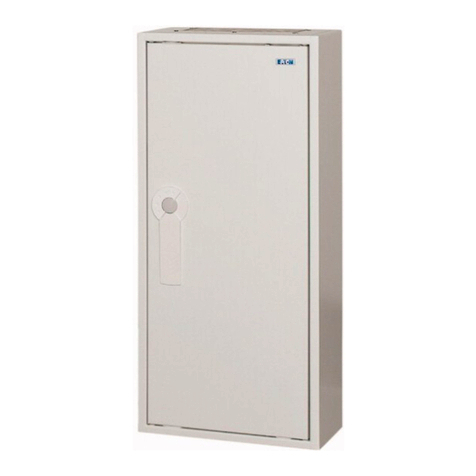
Eaton
Eaton EWK-03 Series Instruction leaflet

Digital Equipment
Digital Equipment StorageWorks UltraSCSI DS-BA370 Series user guide

ADC
ADC Fiber Optic Wall Box FL1000 Series Product overview

Peavey
Peavey Prosys 112HC Specifications

Rosewill
Rosewill CASE 422 Series user manual

